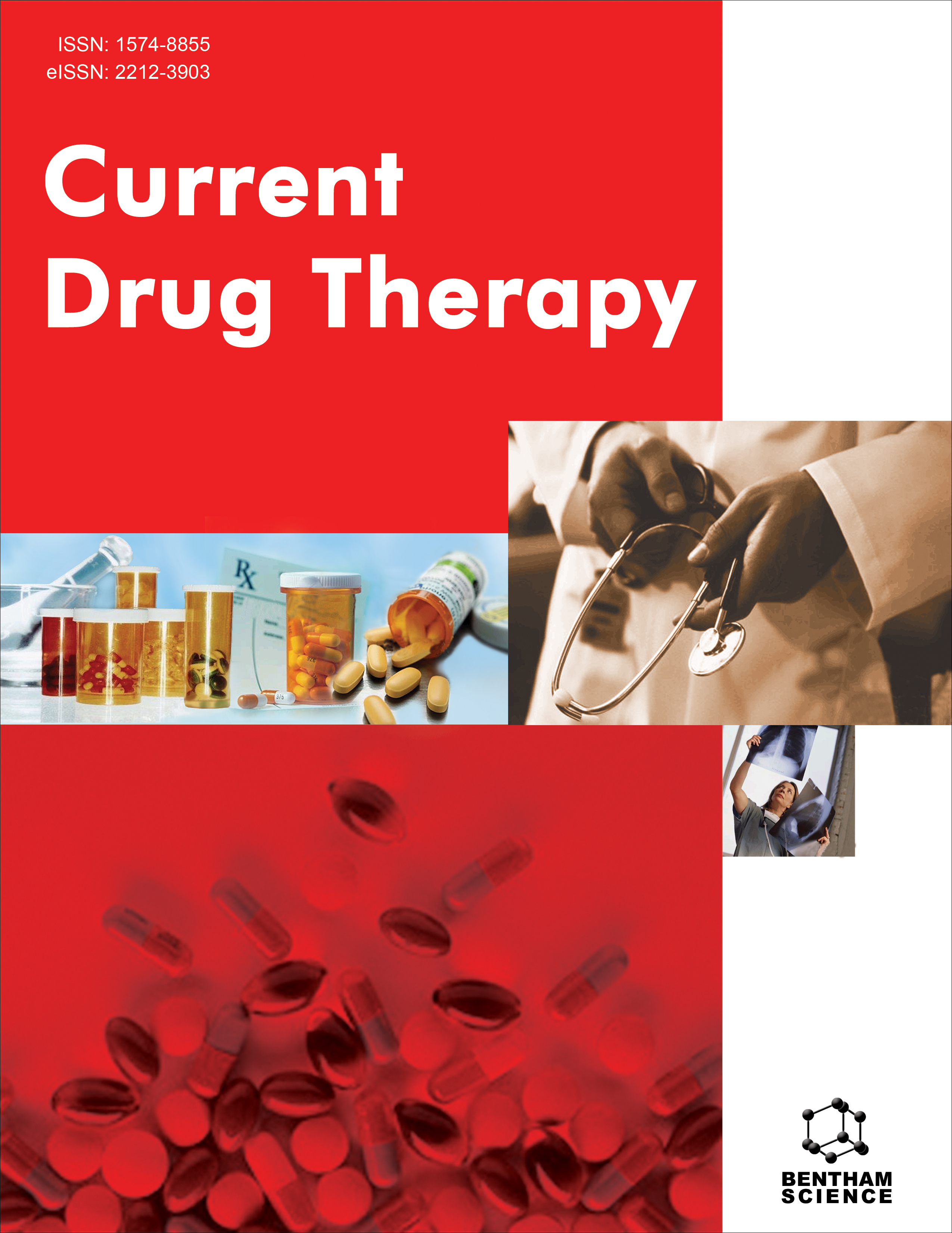- Home
- A-Z Publications
- Current Drug Therapy
- Previous Issues
- Volume 18, Issue 2, 2023
Current Drug Therapy - Volume 18, Issue 2, 2023
Volume 18, Issue 2, 2023
-
-
Silymarin: A Phytoconstituent with Significant Therapeutic Potential - A Narrative Review
More LessSilymarin, is a phytoactive constituent isolated from the fruits and seeds of Silybum marianum L Gaetn.), also called milk thistle belonging to the family of Asteracease. The phytoactive has been used to treat several physiological disorders. The objective of this manuscript was to review the therapeutic prospective of silymarin due to its ability to treat several physiological disorders. The databases such as Pubmed, Elsevier, a Read More
-
-
-
RBC Membrane-coated Nanoparticles: A Comprehensive Review on the Preparation Methods, Characterisations and Applications
More LessNatural cells have become an area of interest due to their biocompatibility, nonimmunogenicity, biodegradability, and targeting specificity. The human vascular system retains distinctive physiological features that can be developed for enhanced and effective targeted drug delivery. Red blood cells (RBCs) have unique features and properties that make them potential natural carriers for numerous substances. Recently, th Read More
-
-
-
Exploration, Development and Optimization of Eco-friendly Novel Dosage Form – Pastilles
More LessAuthors: Hardik Rana, Poonam Panchal, Mansi Dholakia and Vaishali ThakkarBackground: Now-a-day, there is a need to explore the concept of green chemistry in every field. Many existing conventional and novel drug delivery systems have problems related to green chemistry. Anewer natural dosage form pastilles were explored to overcome the existing limitations of the different dosage forms. Objective: The present study aims to optimize the Glipizide (GPZ) matrix pastilles using waxy er Read More
-
-
-
Formulation Development and Evaluation of Apremilast Nanoemulgel for Enhancing Permeability
More LessAuthors: Neelam Patel, Sunita Chaudhary and Ankit ChaudharyBackground: Oral apremilast, a selective phosphodiesterase-4 inhibitor, is effective in the treatment of moderate to severe plaque psoriasis and acute psoriatic arthritic disease. According to BCS categorization, it is a class IV medication, which denotes low solubility and lesser permeability through the skin. Objective: The objective of the research is to develop a nanoemulsion that will increase apremilast’s skin permeability. Read More
-
-
-
Development and Optimization of Guggal Extract Loaded Ultradeformable Vesicles using Central Composite Design for Improving Antioxidant Potential
More LessAuthors: Neha Dhankar, Ravinder Verma, Manish Kumar, Anil Hooda, Deepak Kaushik and Vineet MittalBackground: After almost 30 years of study, it is a scientific fact that inflammation is the root cause of arthritis. Objective: Guggul has a beneficial role in arthritis because of its ability to neutralize the NF-kappa factor. A topical drug delivery system is beneficial to overcome the problems associated with oral drug delivery and offers several potential advantages. Ultra-deformable vesicles (UDVs) are a special type of liposo Read More
-
-
-
Comparison of the Efficacy of Honey and Clotrimazole Cream in the Vulvovaginal Candidiasis Treatment: A Systematic Review and Metaanalysis
More LessBackground: Vulvovaginal candidiasis (VVC) is a common fungal infection of the vaginal area affecting 75% of women at least once in their lifetime. However, there is no clear evidence helping to choose the most effective treatment method to improve the symptoms of VVC. Objective: The objective of this study was to compare the effect of using honey with clotrimazole on the treatment of symptoms of VVC. Methods: All d Read More
-
-
-
Evaluation of Gold Nanoparticles on the Expression of NorA and NorB Efflux Pumps in Ciprofloxacin-resistant Staphylococcus aureus Isolated from Burn Patients
More LessAuthors: Mohammad H. Soleimani, Pegah Shakib, Ali Javadi and Mohammad Reza ZolfaghariBackground: In the development of multidrug resistance, efflux pumps effectively pump drug compounds out of cells, which results in reduced membrane permeability to drug compounds. This study evaluated the effect of gold nanoparticles on the inhibition of norA and norB efflux pumps in ciprofloxacin-resistant Staphylococcus aureus isolated from burn patients in Qom province, Iran. Methods: In this cross-sectional stud Read More
-
Volumes & issues
-
Volume 20 (2025)
-
Volume 19 (2024)
-
Volume 18 (2023)
-
Volume 17 (2022)
-
Volume 16 (2021)
-
Volume 15 (2020)
-
Volume 14 (2019)
-
Volume 13 (2018)
-
Volume 12 (2017)
-
Volume 11 (2016)
-
Volume 10 (2015)
-
Volume 9 (2014)
-
Volume 8 (2013)
-
Volume 7 (2012)
-
Volume 6 (2011)
-
Volume 5 (2010)
-
Volume 4 (2009)
-
Volume 3 (2008)
-
Volume 2 (2007)
-
Volume 1 (2006)
Most Read This Month
Article
content/journals/cdth
Journal
10
5
false
en


